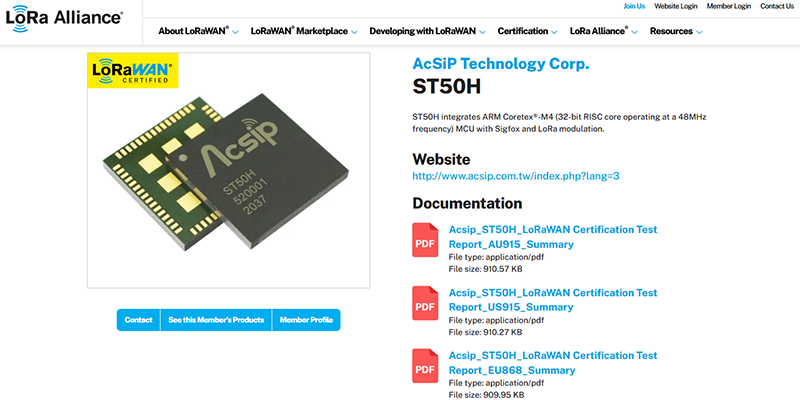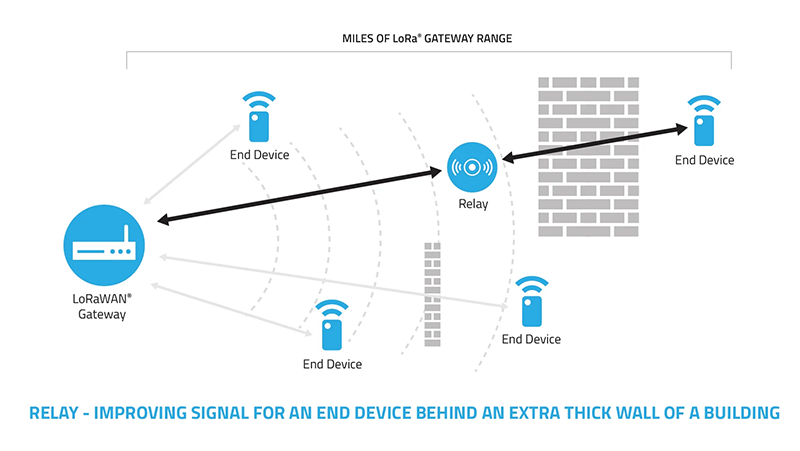Acsip ST50H fully supports the LoRaWAN Relay feature and has passed the LCTT test
| ♦ LoRa Alliance - ST50H |
LoRaWAN is a Low Power Wide Area Network (LPWAN) technology designed specifically for Internet of Things (IoT) devices. It provides long-range, low-power wireless communication capabilities, with a communication range of several kilometers. This makes it ideal for applications requiring wide-area coverage and where frequent battery replacement is impractical. However, in real-world deployments, some end devices may be located too far from gateways or situated in obstructed areas such as factories, tunnels, basements, or behind thick walls—making signal transmission to gateways difficult.
While adding more gateways can improve coverage, the high deployment costs and the complexity of providing power and network infrastructure can make installation challenging in certain locations. This is especially the case when only a few end devices require support, reducing cost-effectiveness. In such scenarios, introducing a Relay device offers a more flexible and cost-efficient solution. A relay node is a Class A LoRa device placed between end devices and the gateway, capable of long-term operation powered by batteries, and effectively extending system coverage.
| ♦ LoRaWan Relay |
Image Source https://blog.semtech.com/the-new-lorawan-relay-feature
Relay devices operate using a Channel Activity Detection (CAD) mechanism, listening for a very short duration (approximately 3–6 milliseconds) every second. This allows them to detect LoRa preambles in an ultra-low power mode. If LoRa activity is detected, the relay wakes up; otherwise, it returns to sleep. Each relay can support up to 16 different end devices.
End devices send a LoRa Wake-On-Radio (WOR) frame to wake up the relay. This WOR packet also carries metadata about the upcoming LoRaWAN message. Upon receiving the WOR, the relay replies with a WOR ACK, enabling synchronization. Because the relay only wakes once per second, the initial WOR frame must be about 1 second long. After synchronization is complete, the subsequent WOR frames can be significantly shorter.
Currently, the ST50H series supports relay functionality on the EU868 frequency band and has successfully passed relay certification testing provided by LCTT, meeting real-world demands for both wide coverage and low power consumption.
E-mail:sales@acsip.com.tw
Back


